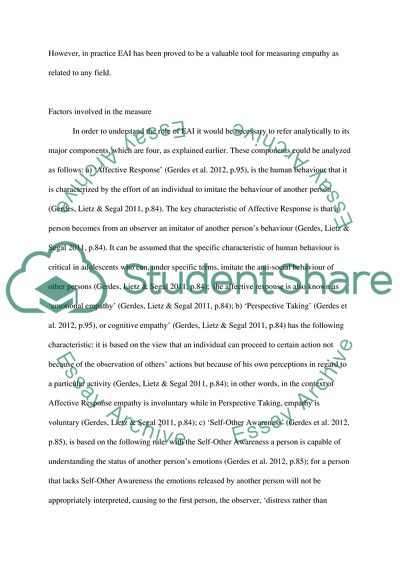Cite this document
(“Exploration of the Impact of Empathy Essay Example | Topics and Well Written Essays - 1500 words”, n.d.)
Exploration of the Impact of Empathy Essay Example | Topics and Well Written Essays - 1500 words. Retrieved from https://studentshare.org/psychology/1612000-exploration-of-the-impact-of-empathy-and-violent-thinking-on-violence-in-young-adults
Exploration of the Impact of Empathy Essay Example | Topics and Well Written Essays - 1500 words. Retrieved from https://studentshare.org/psychology/1612000-exploration-of-the-impact-of-empathy-and-violent-thinking-on-violence-in-young-adults
(Exploration of the Impact of Empathy Essay Example | Topics and Well Written Essays - 1500 Words)
Exploration of the Impact of Empathy Essay Example | Topics and Well Written Essays - 1500 Words. https://studentshare.org/psychology/1612000-exploration-of-the-impact-of-empathy-and-violent-thinking-on-violence-in-young-adults.
Exploration of the Impact of Empathy Essay Example | Topics and Well Written Essays - 1500 Words. https://studentshare.org/psychology/1612000-exploration-of-the-impact-of-empathy-and-violent-thinking-on-violence-in-young-adults.
“Exploration of the Impact of Empathy Essay Example | Topics and Well Written Essays - 1500 Words”, n.d. https://studentshare.org/psychology/1612000-exploration-of-the-impact-of-empathy-and-violent-thinking-on-violence-in-young-adults.


